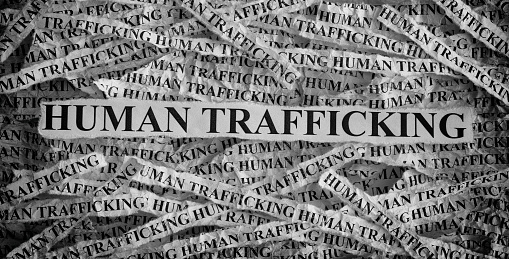
By Marisa Chavez, Tulalip Children’s Advocacy Center and Legacy of Healing
Human Trafficking is a multi-billion dollar criminal industry that denies freedom to 24.9 million people around the world. Every year millions of men, women, and children are trafficked worldwide, and Washington State has the 11th highest rate of trafficking in the United States. It can happen in any community and victims can be any age, race, gender, or nationality.
40% of women who are human trafficking victims or survivors identify as Native American or Alaska Native according to a 2015 study by the National Congress of American Indians.
What is Human Trafficking?
Human trafficking is the business of stealing freedom for profit. It has also been known as “trafficking in persons” or “modern slavery”. In some cases, traffickers trick, defraud or physically force victims into providing commercial sex. In others, victims are lied to, assaulted, threatened or manipulated into working under inhumane, illegal or otherwise unacceptable conditions.
Traffickers will use violence, manipulation, false promises of well-paying jobs, and romantic relationships to target their victims.
Traffickers also look for people who are easy targets for a variety of reasons which include psychological or emotional vulnerability, economic hardship, and lack of a social safety net, natural disasters, and political instability.
Sex Trafficking vs Labor Trafficking
There are many misconceptions of what sex trafficking is. Trafficking rarely looks like what we see in the movies. We all have a picture in our minds of someone lost in a back alley, suddenly grabbed, suffocated with chloroform, and thrown in the back of a van, only to wake up bound by straps or duct tape or handcuffs.
Sex Trafficking can occur in any context, such as hotel-based commercial sex, fake massage businesses, street-based commercial sex, residential brothels, truck stops, or escort services.
Labor Trafficking can occur in any industry, including domestic work, agriculture, traveling sales, health and beauty services, restaurants, or construction.
Traffickers use a variety of methods to lure victims into trafficking situations. Language barriers, fear of their traffickers, and fear of law enforcement frequently keep victims from seeking help, often making human trafficking a hidden crime.
The trauma caused by trafficking can be so impactful that many may not identify themselves as victims or ask for help, even in highly public settings.
Who are the Traffickers?
Traffickers usually employ a much less risky and more effective method: grooming. Grooming involves building trust and taking exploiting vulnerabilities. A trafficker might be a family member, or try to take the place of one, gaining the victim’s trust while brainwashing her or him to see the world in a certain way.
Perpetrators of human trafficking are just as diverse as their victims, and span all racial, ethnic, and gender demographics. Some use their privilege, wealth, and power as a means of control while others experience the same socio-economic oppression as their victims. They include individuals, business owners, gang members, parents or family members of victims, intimate partners, owners of farms or restaurants, and powerful corporate executives and government representatives.
How do traffickers control victims?
Traffickers employ a variety of control tactics, the most commonly include physical and emotional abuse and threats, isolation from friends and family, and economic abuse. They make promises aimed at addressing the needs of their target in order to impose control. As a result, victims become trapped and fear leaving for myriad reasons, including psychological trauma, shame, emotional attachment, or physical threats to themselves or their family.
Traffickers target vulnerable people who have needs that the traffickers can fill. Sometimes they offer material support – a place to live, clothing, and a chance to “get rich quick.” Other times they offer love, emotional support or a sense of belonging. Kidnapping victims and forcing them into the sex trade through violence is rare.
Where to Get Help
For urgent situations, notify local law enforcement immediately by calling 911. You may also want to alert the National Human Trafficking Hotline described below so that they can ensure response by law enforcement officials knowledgeable about human trafficking.
Call the National Human Trafficking Hotline, a national 24-hour, toll-free, multilingual anti-trafficking hotline. Call 1-888-373-7888 to report a tip; connect with anti-trafficking services in your area.
Legacy of Healing is also available to support victims of sex trafficking. To speak with an advocate, call (360) 716-4100.